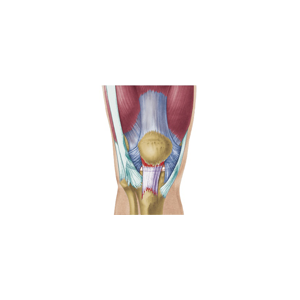Conditions of the Knee
Knee:
Your knee is the largest joint in the body and must endure your entire weight. The knee joint serves as a hinge between the thigh bone (femur) and the top of the shinbone (tibia). It is protected by the kneecap (patella) and has a complex system of tendons, muscles and ligaments to aid movement. Because of this, and because the knee is necessary for running, jumping and other movements, injuries are common. Patellar and Quadriceps Tendonitis:Also called Jumper’s Knee, this condition occurs as a result of overused or tight quadriceps (front thigh muscles). Stress and friction affect the patellar tendon which can become irritated and / or damaged. This is common among athletes who play on hard surfaces, such as basketball or tennis. Chondromalacia Patella Syndrome: When the cartilage on the under surface of the patella breaks down as a result of abnormal patella tracking, resulting in pain that may radiate toward the back of the knee. Pain is greatest on the inner, lower part of the knee. Chondromalacia can lead to arthritis.
Osgood-Schlatter Disease:As the quadriceps contract, especially during growth in adolescents, the patellar tendon is pulled where it attaches to the shin bone (tibia). Pain at the top of the shin may be felt which may last for several weeks or even months. Ligament Tears:Complete or partial tears of the ACL, LCL, MCL or PCL ligaments (see diagram).
Knee Strain:A mild injury to tissue or structures, such as tendons in the knee.
Knee Sprain:A moderate injury to tissue or structures, such as ligaments in the knee.
Bursitis:An inflammation of the bursae (fluid-filled sacs that cushion thebones, tendons and ligaments) caused by an injury or overuse. These sacs can enlarge with extra fluid, resulting in joint pain, tenderness and swelling as they push against the inner tissues.
Degenerative Joint Disease:Advanced arthritis that starts to break down the actual bones of the joint.
Dislocation (Patellar Subluxation):Occurs when the kneecap (patella) partly moves out of place as a result of the kneecap being pushed too hard, or the quadriceps, retinacula, or patellar tendon being pulled too hard.
Meniscal Injuries:The result of abnormal stresses caused during twisting injuries of the knee that result in strain / tears of the meniscal tissues.
Your knee is the largest joint in the body and must endure your entire weight. The knee joint serves as a hinge between the thigh bone (femur) and the top of the shinbone (tibia). It is protected by the kneecap (patella) and has a complex system of tendons, muscles and ligaments to aid movement. Because of this, and because the knee is necessary for running, jumping and other movements, injuries are common. Patellar and Quadriceps Tendonitis:Also called Jumper’s Knee, this condition occurs as a result of overused or tight quadriceps (front thigh muscles). Stress and friction affect the patellar tendon which can become irritated and / or damaged. This is common among athletes who play on hard surfaces, such as basketball or tennis. Chondromalacia Patella Syndrome: When the cartilage on the under surface of the patella breaks down as a result of abnormal patella tracking, resulting in pain that may radiate toward the back of the knee. Pain is greatest on the inner, lower part of the knee. Chondromalacia can lead to arthritis.
Osgood-Schlatter Disease:As the quadriceps contract, especially during growth in adolescents, the patellar tendon is pulled where it attaches to the shin bone (tibia). Pain at the top of the shin may be felt which may last for several weeks or even months. Ligament Tears:Complete or partial tears of the ACL, LCL, MCL or PCL ligaments (see diagram).
Knee Strain:A mild injury to tissue or structures, such as tendons in the knee.
Knee Sprain:A moderate injury to tissue or structures, such as ligaments in the knee.
Bursitis:An inflammation of the bursae (fluid-filled sacs that cushion thebones, tendons and ligaments) caused by an injury or overuse. These sacs can enlarge with extra fluid, resulting in joint pain, tenderness and swelling as they push against the inner tissues.
Degenerative Joint Disease:Advanced arthritis that starts to break down the actual bones of the joint.
Dislocation (Patellar Subluxation):Occurs when the kneecap (patella) partly moves out of place as a result of the kneecap being pushed too hard, or the quadriceps, retinacula, or patellar tendon being pulled too hard.
Meniscal Injuries:The result of abnormal stresses caused during twisting injuries of the knee that result in strain / tears of the meniscal tissues.



